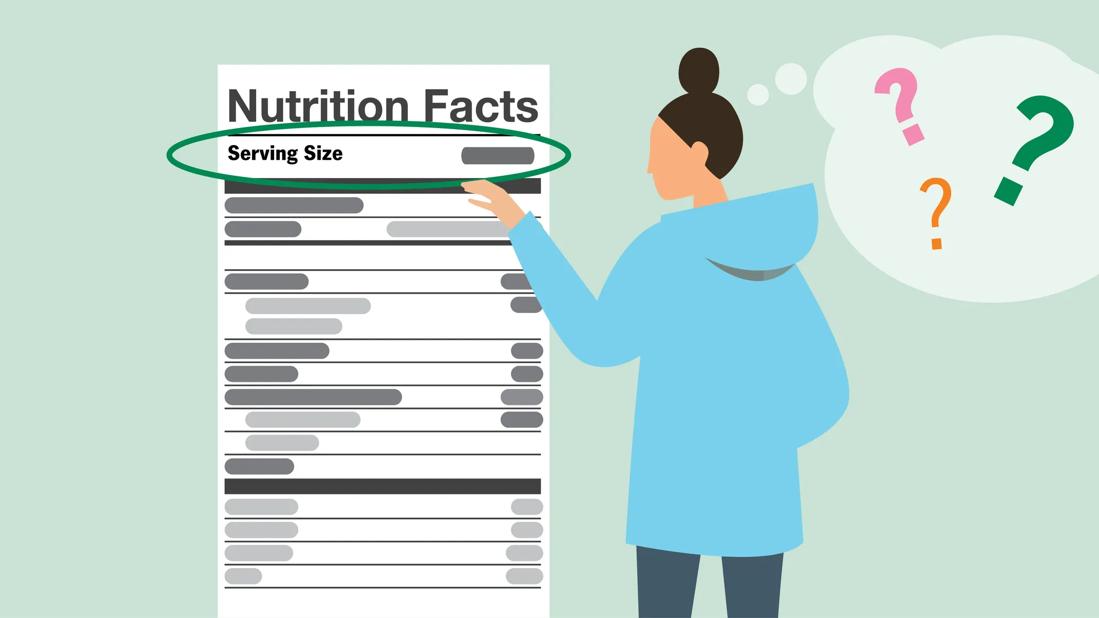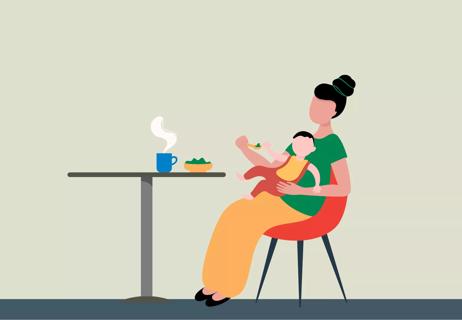Getting the hang of portions can help you better understand how much to put on your plate

You only meant to eat a couple of crackers. But once you reached into the bag, you just kept going … and going … and going.
Advertisement
Cleveland Clinic is a non-profit academic medical center. Advertising on our site helps support our mission. We do not endorse non-Cleveland Clinic products or services. Policy
When you’re trying to get or stay healthy, choosing nutritious foods is important. But there’s more to it. You also need to pay attention to how much food you’re eating, which is where portions come into play.
Registered dietitian Julia Zumpano, RD, LD, explains what portion sizes are, why it’s so important to pay attention to them and how to practice portion control in your everyday life.
It can be easy to confuse serving sizes and portion sizes, especially because there’s lots of overlap in the ways we discuss them. Zumpano breaks them down:
Let’s use almonds as an example. A serving size of almonds is 1 ounce, or about 23 almonds, which amounts to around 160 calories. But if you eat 46 almonds, your portion size is double the serving size, which means you’re getting twice the amount of calories and nutrients.
Advertisement
“Nuts are a great example of a healthy, nutrient-rich food that should be consumed in small portions,” Zumpano says. “It’s easy to eat a lot of them at a time without realizing how high in calories they are.”
Practicing portion control is one of the best ways to adjust your diet to achieve and maintain a healthy weight. Even if you’re not trying to lose or gain weight, being aware of recommended portion sizes helps you take in the right amount of nutrition.
“Paying attention to portion sizes can help you manage your weight and limit the amount of sodium, sugar and fat you consume,” Zumpano states.
Knowing how to manage your portions is especially helpful during social events and the holiday season, when festive parties and rich meals abound. (Hello, homemade cookies in the break room!)
“Meals and snacks around the holidays tend to be higher in fat and sugar,” she continues, “but choosing smaller portions of these foods can prevent you from overindulging.”
So, how can you start to get a handle on portion sizes? Learn how to read nutrition labels on food packaging and check them for everything you buy. Look for the number of servings in each container and the nutrients per serving.
The best way to determine the amount of food in a given serving is to look at the nutrition label and measure it out. Get in the habit of whipping out a measuring cup and filling it with the proper-sized portion of foods, like vegetables and rice, then emptying it onto a plate. This will help you learn what these serving sizes look like.
“When you do this, take note of how much of the plate is covered,” Zumpano advises. “It takes extra work, but eventually, you’ll become much better at learning to ‘eyeball’ amounts of food to know whether it’s too much or too little.”
“What we consider a heart-healthy plate starts with a standard nine-inch plate,” Zumpano explains. “Then, you want to think about dividing that plate in half visually.” Here’s how much space each type of food should take up.
Of course, portion sizes aren’t the only factor in a healthy meal. It’s also important to limit condiments and toppings that add unwanted fat and sodium to your meal — think gravies, butter, cream sauces and cheese.
Advertisement
“That’s where we add a lot of extra fat, salt and calories to a meal,” Zumpano warns, “so, try to keep it as simple as possible. For extra flavor, you can add herbs, a drizzle of extra virgin olive oil or even a little bit of mustard, which is low in sodium and fat.”
This quick portion size guide, which compares suggested serving sizes of foods with familiar objects, can help you better understand how much to put on your plate.
| Food | Amount | Size Comparison |
|---|---|---|
| Meat | 3 to 4 ounces | Deck of cards |
| Cheese | 1 ounce | 9-volt battery |
| Bread | 1 slice | DVD |
| Rice/pasta | 1/2 cup | Tennis ball |
| Potatoes/dried beans | 1/2 cup | Light bulb |
| Fruit | 1 medium-sized piece | Tennis ball |
| Vegetables | 1/2 cup | Tennis ball |
| Nuts | 1 ounce | Golf ball |
| Butter/nut butter | 1 teaspoon | Tip of the thumb |
| Salad dressing | 1 tablespoon | Tip of the thumb |
| Food | ||
| Meat | ||
| Amount | ||
| 3 to 4 ounces | ||
| Size Comparison | ||
| Deck of cards | ||
| Cheese | ||
| Amount | ||
| 1 ounce | ||
| Size Comparison | ||
| 9-volt battery | ||
| Bread | ||
| Amount | ||
| 1 slice | ||
| Size Comparison | ||
| DVD | ||
| Rice/pasta | ||
| Amount | ||
| 1/2 cup | ||
| Size Comparison | ||
| Tennis ball | ||
| Potatoes/dried beans | ||
| Amount | ||
| 1/2 cup | ||
| Size Comparison | ||
| Light bulb | ||
| Fruit | ||
| Amount | ||
| 1 medium-sized piece | ||
| Size Comparison | ||
| Tennis ball | ||
| Vegetables | ||
| Amount | ||
| 1/2 cup | ||
| Size Comparison | ||
| Tennis ball | ||
| Nuts | ||
| Amount | ||
| 1 ounce | ||
| Size Comparison | ||
| Golf ball | ||
| Butter/nut butter | ||
| Amount | ||
| 1 teaspoon | ||
| Size Comparison | ||
| Tip of the thumb | ||
| Salad dressing | ||
| Amount | ||
| 1 tablespoon | ||
| Size Comparison | ||
| Tip of the thumb |
Scaling back on your portions can take practice, patience and a little bit of time. Zumpano shares some tips to help you hack the process of teaching yourself this healthy habit.
Advertisement
Advertisement
Learn more about our editorial process.
Advertisement

Learning about your relationship with food can help improve your eating behaviors and patterns

Eating mindfully, sipping water and chewing slowly can help your brain catch up with your stomach

Stress, lack of sleep and not eating enough all contribute to sugar hankerings

Be mindful, like gauging your hunger and reviewing nutritional information

Emotions can power food choices when your favorite team falls short

Turn down the pressure, but don't stop offering

From routines to portion sizes, these strategies can help your child eat a broad range of food

If you’re feeling short of breath, sleep can be tough — propping yourself up or sleeping on your side may help

If you fear the unknown or find yourself needing reassurance often, you may identify with this attachment style

If you’re looking to boost your gut health, it’s better to get fiber from whole foods